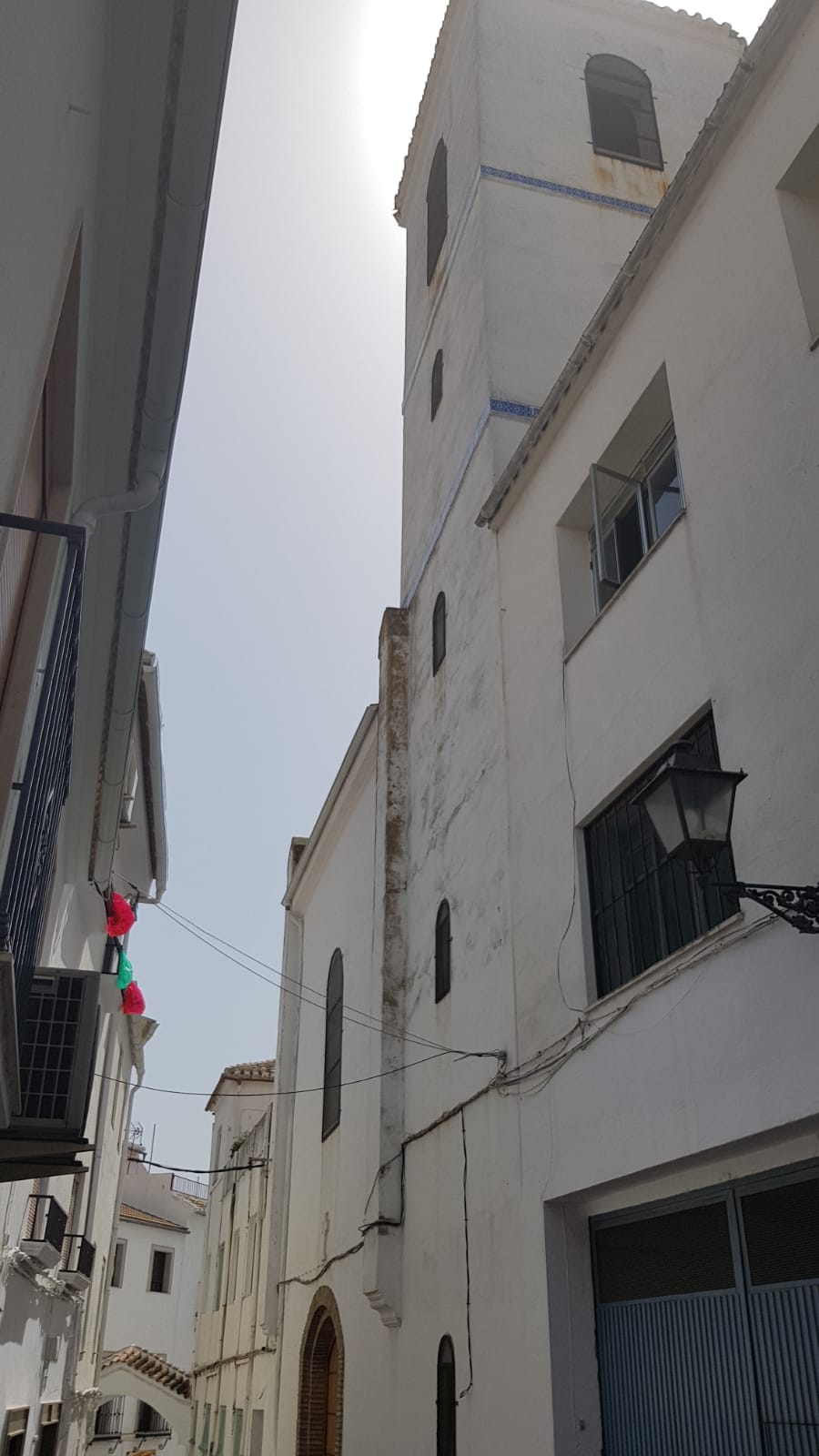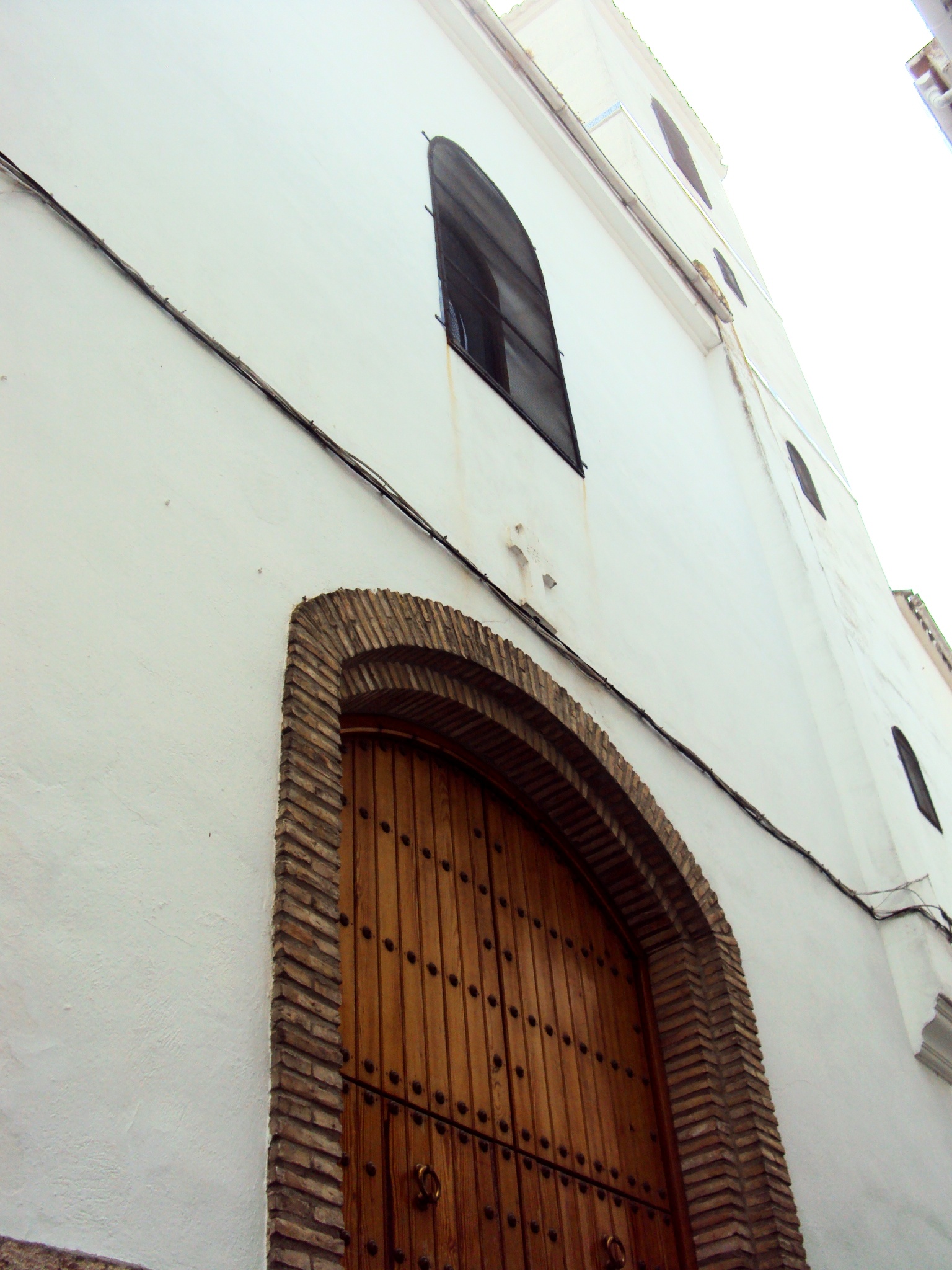
Español
La Iglesia o Capilla de San José data de mediados del siglo XVII, aunque en la actualidad se encuentra muy remodelada exterior e interiormente respecto a lo original. La última reforma fue en los años 50.
El templo se ubica detrás del que fue Hospital de San José, hoy Centro de Salud.
Esta iglesia se fundó gracias a la generosidad del presbítero José Rosales Ruiz, quien cuenta con un monumento a su figura formada por un busto fechado en 1902 y firmado por el escultor Pablo Loyzaga.
El diseño de su nave era con cruz latina, hasta que en 1963 se construyó dicho Hospital y quedó en cruz griega. Entonces se ubicó la entrada al edificio en el brazo derecho del crucero y convirtiendo este en fachada principal. Justo en este lateral se ubicó el nuevo coro. Muy sencilla en su interior, la iglesia es coronada por una torre prismática de influencia granadina.
Como figura en la leyenda del tambor, el templo está dedicado al glorioso Patriarca San José, y a los Sagrados Corazones de Jesús y de María.
Audio

English
The San José Church dates back to the mid of the XVIIth century, although it was remodeled more recently. The latest reform was made in the ´50th.
The temple is located in the back of what was once the San José Hospital, now Medical Centre. This church was founded thanks to the presbitarian José Rosales Ruiz´s generosity, to whom a bust was dedicated in 1902 and signed by the sculptor Pablo Loyzaga.
The shed´s design was made of a latin cross, untill 1963 when the hospital was built and the cross changed into a greek one. Since then, the entrance was moved to the right wing of the building. In this same side was the Chorus also relocated.
<`With a very modest arquitecture, the church is crowned by a prismatic tower of granadian influence. As mentioned in the “drum legend”, the temple was dedicated to the Glorious
Patriarch San José and to the Sacred Hearts of Jesus and Mary.
Sound

Français
L’église (ou chapelle) de Saint Joseph date de la moitié du 17e siècle, bien qu’actuellement elle est le résultat de plusieurs réformes intérieures et extérieures. La dernière réforme remonte aux années 50. Le temple se trouve derrière ce qui jadis était l’hôpital de Saint Joseph, actuel centre médical. Cette église fût fondée grâce à la générosité du presbytère José Rosales Ruiz, et comporte un monument à son image, datant de 1902 y signé par le sculpteur Pablo Loyzaga.
Le design de la nef était en forme de croisée latine jusqu’a ce qu’en 1963 se construise l’hôpital et soit transformé en croisée grecque. L’entrée se déplaça à l’aile droite du bâtiment, devenant ainsi l’entrée principale. La nouvelle chorale se situe sur le même latéral.
De décoration très simple, l’église est couronnée d’une tour prismatique d’influence grenadine. Comme figure dans la légende du tambour, le temple est dédié au glorieux patriarcat Saint Joseph et aux sacrés cœurs de Jésus et Marie.
Son
La Iglesia o Capilla de San José data de mediados del siglo XVII, aunque en la actualidad se encuentra muy remodelada exterior e interiormente respecto a lo original. La última reforma fue en los años 50.
El templo se ubica detrás del que fue Hospital de San José, hoy Centro de Salud.
Esta iglesia se fundó gracias a la generosidad del presbítero José Rosales Ruiz, quien cuenta con un monumento a su figura formada por un busto fechado en 1902 y firmado por el escultor Pablo Loyzaga.
El diseño de su nave era con cruz latina, hasta que en 1963 se construyó dicho Hospital y quedó en cruz griega. Entonces se ubicó la entrada al edificio en el brazo derecho del crucero y convirtiendo este en fachada principal. Justo en este lateral se ubicó el nuevo coro. Muy sencilla en su interior, la iglesia es coronada por una torre prismática de influencia granadina.
Como figura en la leyenda del tambor, el templo está dedicado al glorioso Patriarca San José, y a los Sagrados Corazones de Jesús y de María.
The San José Church dates back to the mid of the XVIIth century, although it was remodeled more recently. The latest reform was made in the ´50th.
The temple is located in the back of what was once the San José Hospital, now Medical Centre. This church was founded thanks to the presbitarian José Rosales Ruiz´s generosity, to whom a bust was dedicated in 1902 and signed by the sculptor Pablo Loyzaga.
The shed´s design was made of a latin cross, untill 1963 when the hospital was built and the cross changed into a greek one. Since then, the entrance was moved to the right wing of the building. In this same side was the Chorus also relocated.
With a very modest arquitecture, the church is crowned by a prismatic tower of granadian
influence. As mentioned in the “drum legend”, the temple was dedicated to the Glorious
Patriarch San José and to the Sacred Hearts of Jesus and Mary.
L’église (ou chapelle) de Saint Joseph date de la moitié du 17e siècle, bien qu’actuellement elle est le résultat de plusieurs réformes intérieures et extérieures. La dernière réforme remonte aux années 50. Le temple se trouve derrière ce qui jadis était l’hôpital de Saint Joseph, actuel centre médical. Cette église fût fondée grâce à la générosité du presbytère José Rosales Ruiz, et comporte un monument à son image, datant de 1902 y signé par le sculpteur Pablo Loyzaga.
Le design de la nef était en forme de croisée latine jusqu’a ce qu’en 1963 se construise l’hôpital et soit transformé en croisée grecque. L’entrée se déplaça à l’aile droite du bâtiment, devenant ainsi l’entrée principale. La nouvelle chorale se situe sur le même latéral.
De décoration très simple, l’église est couronnée d’une tour prismatique d’influence grenadine. Comme figure dans la légende du tambour, le temple est dédié au glorieux patriarcat Saint Joseph et aux sacrés cœurs de Jésus et Marie.



